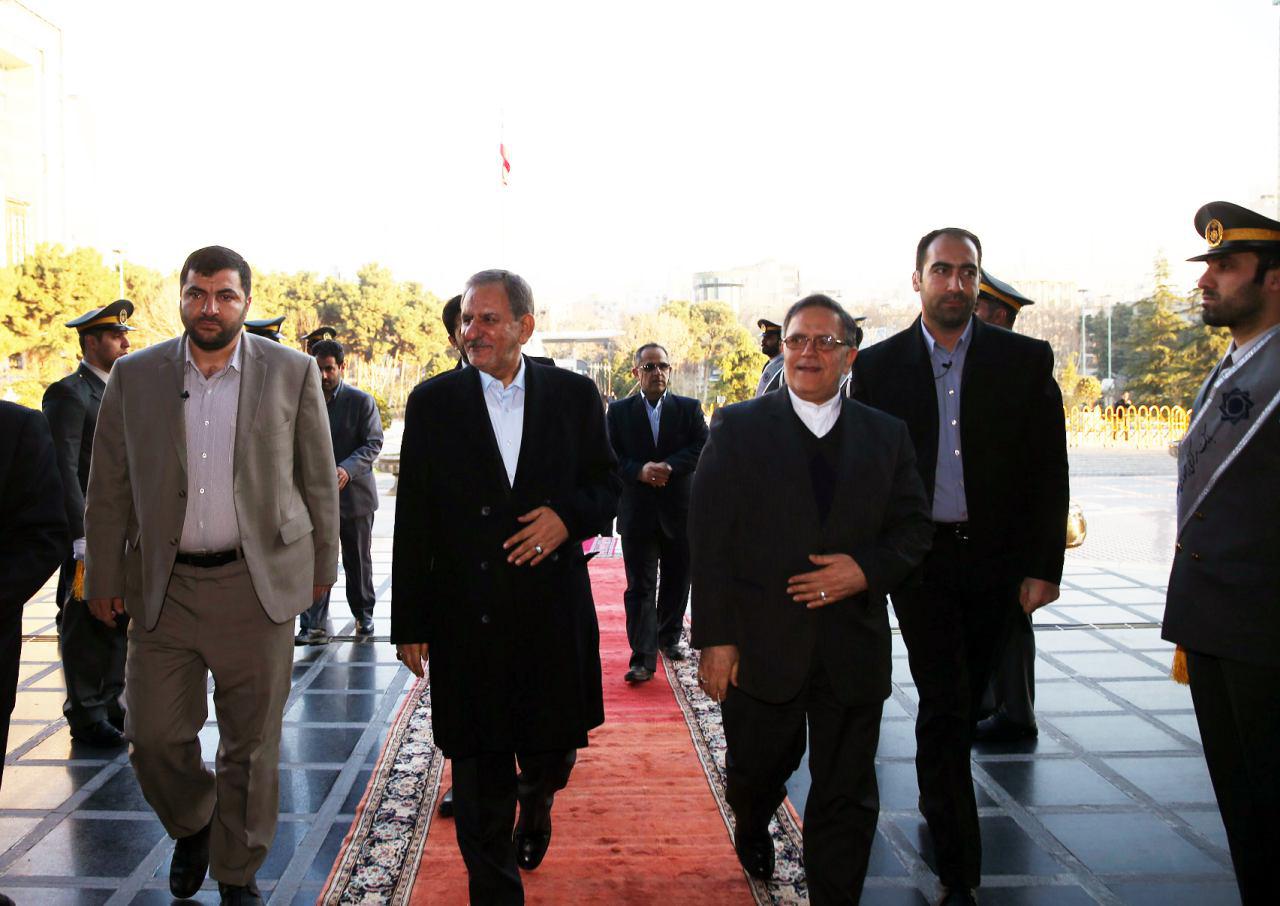The governor of the Central Bank of Iran said the bank's independence is the byword for the realization of Resistance Economy tenets in the county's monetary policymaking.
"The most important issue regarding Resistance Economy is the principle of the central bank's independence," Valiollah Seif was also quoted as saying by IRNA.
Seif was speaking at an event focusing on CBI efforts concerning the implementation of Resistance Economy principles, which was also attended by First Vice-President Es'haq Jahangiri at CBI's headquarters in Tehran.
Resistance Economy refers to a set of principles aimed at bolstering domestic production, curbing oil dependence, improving productivity and encouraging Iranians to buy domestically-manufactured products. The values have been hailed by the Leader of Islamic Revolution Ayatollah Seyyed Ali Khamenei as the surest way of achieving sustainable prosperity and economic empowerment.
The central bank had unveiled a roadmap revolving around three major goals to achieve long-term targets envisioned by Resistance Economy in mid-December.
"Three general medium-term goals of 'price stability and taming inflation', 'creating stability in the financial sector of the economy' and 'decreasing foreign exchange fluctuations and improving transparency and efficiency of the currency market in meeting production and trade needs' have been set to realize Resistance Economy in monetary, banking and currency sectors," Seif had said at the time.
Noting that the independence of the monetary regulatory body is considered essential throughout the world, Seif said at Saturday's meeting that it has also historically been a factor in reducing the inflation rate.
"As a result of employing such an approach, keeping inflation at low levels is now established in global economies and two-digit inflation rates are only witnessed in few countries," he said.
According to the CBI governor, the findings of various studies suggest that an inverse relationship exists between the independence of the monetary regulatory body and the inflation rate.
Countries that gave the most leeway to such entities, he adds, experienced the lowest inflation rates.
The independence and autonomy of the central bank are also stressed in an impending bill that is yet to be passed by the parliament. The bill, known as the Central Bank Bill, aims to modernize banking regulations among other things.
Enhancing the independence of CBI, improving monetary policymaking and increasing CBI’s supervision over the money market are among its key goals.
As part of the bill, CBI would have more authority for setting policies and supervising banks and credit institutions.
Gov't on Board
Jahangiri, who also heads the Resistance Economy Headquarters–a government body that directly reports to the president—stressed the importance of central bank's independence.
"The focus on CBI in implementing the policies of Resistance Economy is important and the independence of the country's monetary and banking regulatory body is among the most important issues addressed in the government's new [central bank] bill, which will be delivered to the parliament," he said.
Referring to the unification of Iran's dual foreign exchange regime that has been in the works for a long time, the official said "it will be implemented the very moment the central bank deems appropriate".
High-ranking officials, including Seif and Economy Minister Ali Tayyebnia, have repeatedly heralded the implementation of the rate unification plan by the end of the current fiscal year in March, but their latest remarks and recent fluctuations in the currency market have cast doubt over its timetable.
Early last week, the central bank issued a foreign exchange directive that curbs the activities of bureaux de change and increases banks' role in forex trading. Letters of credit are now opened specifically by banks that receive at least 10% of the total amount of L/C in advance.
"To engage in imports through the banks, the initial rate of the dollar has been set at 36,000 rials and when the time comes for settling the debt, the deal will be finalized at the open market rate when the L/C was issued or the time of the settlement," Seif had said while elaborating on the directive.
Jahangiri said all official bodies are obligated to abide by the directive and thereby make moneychangers return to their original mandate–which had taken on the job of banks in transferring money during the sanctions.
"If anyone wishes to purchase currency from moneychangers, the rial equivalent and how it will be used must be determined. If someone buys a significant amount of US dollars and its use is unclear, a three-man panel will review the case to prevent any market disruption," he said.
In light of the recent unease in the Iranian currency market, the exchange rate of the greenback crossed the 40,000-rial threshold but the rial regained some ground last week. It was quoted in the free market at 39,500 to the dollar on Saturday.


